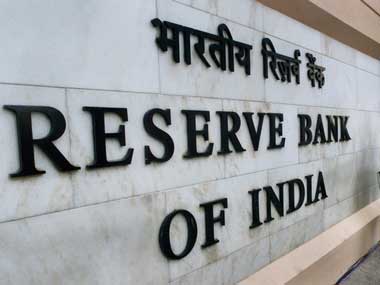The negatives are in the prices, the positives are yet to be built into bank valuations. If the market starts pricing in the positives, the Bank Nifty index will return good gains in the coming months.
The banking sector has had a very poor run for the last one year on an absolute as well as relative basis. The Bank Nifty has lost 19 percent year on year and 12.5 percent since end-June 2011.
The benchmark index, Nifty, has lost 14 percent year on year and 9 percent since 30 June. Banks have had to face rising interest rates, rising loan provisions, high inflation, tight liquidity and weak sentiments over the last one year and this has led to underperformance of the Bank Nifty against the Nifty.
Benchmark 10-year bond yields have gone up by almost 100 basis points (where 100 bps equal 1 percent) over the last one year while liquidity has consistently been tight with banks borrowing funds from the Reserve Bank of India (RBI) on a daily basis. The cost of borrowing from the RBI has gone up by 200 bps over the last one year as the RBI raised repo rates from 6.25 percent to 8.25 percent.
[caption id=“attachment_112613” align=“alignleft” width=“380” caption=“Source NSE”]  Reuters.
Inflation has gone up from 7.5 percent levels in November 2010 to 9.72 percent as of September 2011, hurting sentiments for both consumers as well as investors.
Loan loss provisions for the State Bank of India (SBI), the largest bank by assets in India, had gone up by 82 percent in the fourth quarter of 2010-11, leading to worries of non-performing loans in other banks. SBI’s downgrade by Moody’s this month on non-performing loans has increased the nervousness in the markets about banks’ asset quality.
Is the worst over for the banking sector and will the market look ahead and bridge the absolute as well as relative underperformance seen over the last one year? It is likely that prospects for the banking sector look better going forward, given that the negatives, mentioned above, are there in the prices of bank stocks.
The Bank Nifty is weighted towards three stocks, ICICI Bank (31 percent), HDFC Bank (26 percent) and SBI (15 percent). ICICI Bank’s stock price has fallen by 22 percent over the last one year while SBI’s stock price has fallen 40 percent over the last one year.
HDFC Bank is the only heavyweight that gave positive returns over the last one year with an 8 percent stock price gain. Bank Nifty would have fallen much more if not for HDFC Bank.
The second quarter 2011-12 results of HDFC Bank show that the bank grew credit at 25.6 percent year on year. Other smaller private sector banks have also show credit growth of over 20 percent in the second quarter of 2011-12. ICICI Bank is yet to declare its results but its growth is expected around 20 percent levels.
State Bank is likely to show muted credit growth given its loan and equity issues, but given the fact that its stock price is down 40 percent year on year, the markets will not look to become more bearish on the stock from these levels.
Private sector banks have been holding on well despite the many issues highlighted above. Going forward, if inflation can come down to 7 percent levels by end-March 2012 - as the finance minister and the RBI are saying - and if RBI is done or almost done with monetary tightening, the sentiments on bank stocks will improve.
The monsoons have been above normal this year and if this leads to higher credit demand in the busy season, banks can see good credit growth in the second half of this fiscal. Liquidity is tight but is not impacting credit growth for private sector banks. If liquidity is manageable, it is highly positive for banks, as deposit rates will be kept in check.
Bond yields are ruling at multi-year highs on the back of inflation and higher-than-budgeted government borrowing. The government announced a borrowing programme than was higher by Rs 53,000 crore for the second half of fiscal 2011-12.
 [/caption]
The risk of government borrowing crowding out private sector is high, but if inflation does trend down, the markets, in anticipation of lower rates ahead, will look to buy into bond yields at higher levels. In such a scenario government borrowing is not likely to crowd out private sector as bond yields will be kept in check and will trend down going forward.
Arjun Parthasarathy is the Editor of www.investorsareidiots.com, a web site for investors.


)
)
)
)
)
)
)
)
)



